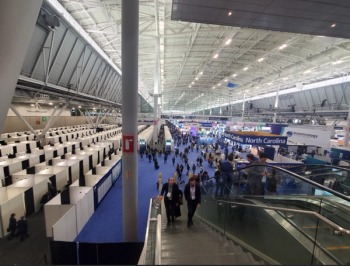
- BioPharm International-12-01-2011
- Volume 24
- Issue 12
The Case for Pediatric Exclusivity
Reauthorization of pediatric exclusivity provisions looms in 2012 and debates begin anew.
Sometimes Congress actually gets it right, but keeping it that way is another matter. In late 1997, the FDA Modernization Act was passed and among its many provisions was an incentive for pediatric exclusivity. Under the law, FDA requested that the pharmaceutical industry conduct pediatric studies in exchange for an additional six months of market protection against generic-drug competition for all the products containing the active ingredient for which the studies applied. A year later, a complementary and mandatory provision was added in a carrot-and-stick approach to ensure the broadest coverage for an estimated 75% of drugs that were being used off-label for children. This incentive package was reauthorized in 2002 and 2007, and reauthorization looms again in 2012. The debate already is taking shape, and the arguments and adversaries are lining up in a now predictable array.
There is little debate about the success of the program, which has been publicly lauded by regulators, industry, pediatric healthcare professionals, and public-health advocates. Its record after nearly 15 years is still noteworthy: more than 400 drugs have been labeled for pediatric use by hundreds of companies (1). Granted, there are still some challenges to be addressed, especially with neonates and formulations, but the US program has been emulated worldwide. Europe, for example, adopted a similar approach in 2004, and Japan has been holding high-level discussions on proposals for such a program as well.
Nor is there much debate about the difficulty of doing pediatric studies despite a report by the Tufts Center for the Study of Drug Development that showed that the scope of work, the length of time required to do pediatric studies, and the related costs have increased significantly during the life of the program (2). Nor was there any concern that more than 40% of pediatric-study programs fail, which increases overall industry spending on pediatric studies by about two-fold. Even if pediatric studies are accepted in time to garner the extension of market exclusivity, many sponsors experience events, such as court challenges by generic-drug companies, product withdrawals or prescription-to-over-the-counter switches that dramatically decrease sales during the exclusivity period.
Ironically, the debate always is about whether the industry is receiving too much benefit from the program despite that, nominally at least, Congressional intent was to incentivize the industry. Every five years, tired banners are waved about a profits cap, tying the length of the award to projected profits or reducing the exclusivity period to three months. All of this grandstanding starts anew even though neutral parties have considered these proposals in past debates and have rejected them.
For example, the European Commission affirmed that a fixed six-month award is optimal both in terms of practicality and fairness (3). FDA testified in the last round of reauthorization hearings held in May 2001 that it does not really bring expertise in business matters to the table, but relies on reports from independent certified accountants or accepts a manufacturer's certification when cost recovery data is required (4). FDA added that it faces risk of litigation, especially if there is any ambiguity in the language tying length of exclusivity to sales data. The agency is also troubled that using vital resources to analyze financial data or police the sales of drugs would compromise FDA's primary mission. Congress, too, has previously weighed the trade-off implicit in marketing exclusivity in the Orphan Drug Act and determined that the benefits exceeded the dangers (5).
Why does the pediatric studies incentive work? Because it does what an incentive program is supposed to do. It incites the intended audience to take action. Unlike many alternative incentive proposals, it is not too speculative or unsustainable, such as those dependent on the vagaries of government grant programs or prizes from charitable foundations nor is it too limited for the risks being taken, such as tax credits. A few other incentive programs have worked, but none are as effective as the carrot-and-stick approach used in pediatric exclusivity. It has withstood the test of time and is being emulated by other countries at a time when laws passed by Congress are considered good models for little else. Now and through 2012, we have and will continue to have debates on the presidential election, healthcare reform, and the national debt. Do we really need another divisive debate on something that actually works?
Christopher Milne, associate director with the Tufts Center for the Study of Drug Development,
REFERENCES
1. FDA, "Pediatric Labeling Changes through July 18, 2011" (Rockville, MD),
2. C.P. Milne, Food Drug Law J. 57 (3), 491-518 (2002).
3. EC, "Proposal for a Regulation of the European Parliament and of the Council on Medicinal Products for Paediatric Use and Amending Council Regulation (EEC) No1768/92, Directive 2001/83/EC and Regulation (EC) No 726/2004. Extended Impact Statement Final" (Brussels, Sept. 3, 2004),
4. J. Woodcock, Statement, Senate Health, Education, Labor, and Pension Committee Hearing, May 8, 2001.
5. Code of Federal Regulations, Title 21, Food and Drugs (Government Printing Office, Washington DC), Part 316.
Articles in this issue
about 14 years ago
BioPharm International, December 2011 Issue (PDF)about 14 years ago
Troublesome Signs for Bio/Pharmaceutical R&Dabout 14 years ago
Supporting Innovation Requires Consistency and Visionabout 14 years ago
FDA Revamps to Meet New Challengesabout 14 years ago
The Employment Outlook BrightensNewsletter
Stay at the forefront of biopharmaceutical innovation—subscribe to BioPharm International for expert insights on drug development, manufacturing, compliance, and more.




